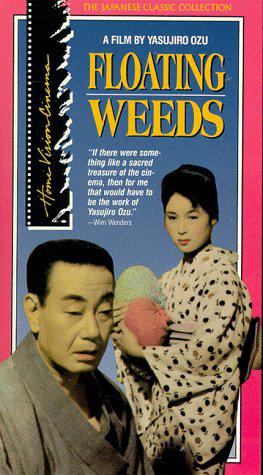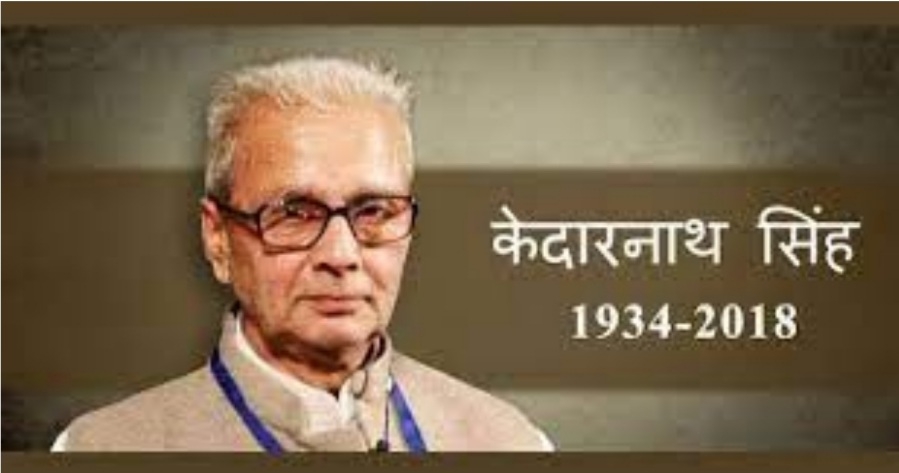FLOATING WEEDS
Floating Weeds (1959), a splendid filmic composition by the prolific Japanese director Yasujiro Ozu is unrivalled in its employment of deep focus, pillow shots and frame within a frame technique. This movie portrays the story of a group of wandering theatre artists who were well-known for performing Kabuki style plays(these Kabuki drams provided the primary inspiration for the Japanese films of 1890s). The exposition of the film includes the story of Komajuro, the owner of the aforementioned drama troupe who goes on to visit his former flame Oyoshi and their son Kiyoshi. This act of her beloved enrages Komajuro's current consort Sumiko. Envious Sumiko hires an indentured actress Kayo to seduce Kiyoshi and betray him eventually.
Contrary to their plotting, Kayo falls hopelessly in love with Kiyoshi and this subsequently upsets Kiyoshi's lofty aspirations for better education. Acquainted with this foul play, Komajuro banishes Sumiko from his sight. The rest of the movie is all about how the protagonists resolve their conflicts. To know whether Komajuro settles with Oyoshi or reconciles with Sumiko you will have to watch this masterpiece. More than just a movie Floating Weeds is a picturesque Art Gallery with elegant frames painted exquisitely. The mundane monotonous life of the players and the struggles Komajuro confronts in his personal life accounts for the realism in the film whereas the tactics employed by Sumiko in getting rid of Oyoshi and Kiyoshi add a tint of drama to this visual miracle.
Yasujiro Ozu, along with Akira Kurasowa and Kenji Mizoguchi led Japanese films to world Coliseum. Ozu attained prominence with his efficatious Shomin-Geki Technique. This genre which can be translated as "Common People Drama" is a reflection of contemporary society on the celluloid. These realistic movies portray the lives of lay men . These films essentially indulge with travails of proletarians. The struggles they endure, the conflicts they encounter in their day-to- day lives and the love-hate relationships they have with their family members form the major themes of these movies. The directors who were involved in this Movement include- Ozu's mentor Yasujiro Shimazu, Heinosuke Gosho and Kenji Mizoguchi.
Ozu seldom forced any ostentatious dialogues into his movies. All of the characters live on screen. Except for the rainstorm scene where Komajuro and Sumiko argue calling each other names and asserting the earnestness and magnanimity of oneself over the other, no scene is conflicting. The course of the movie is rather smooth. This rain scene which demanded multiple takes is a masterpiece in itself. The characters of Sumiko and Oyoshi are in perfect contrast with each other. Sumiko-a young woman whose love for her master forces her to coerce Kayo into seducing Kiyoshi but Oyoshi who equally loves Komajuro is too preoccupied with the struggles of life to become envious of Sumiko. Elsewhere in the film Oyoshi asserts that it is unbecoming of her to be jealous at that age.
Kayo who has just stepped into the threshold of youth has fallen prey to love. Yet her love for her master surpassed her love for her beloved. Her plaintive plea towards her master testifies her wild yearning to work for him and attain his approbation. But her doleful countenance pacifies her master and he leaves the house entrusting her with Oyoshi. Sumiko , having reckoned her tomfoolishness, went back to her irated master and requested him to take her along. Her master ,evidently decided not to forsake her ,accepts her companiinship.Thus the entire pell-mell got resolved . No superhuman character is present in the film, yet every character succeeded in entrancing the viewers. Ozu's picturization of serene nature contrasts with the intense emotional turmoil of the characters.
Ozu's film is a miniature world, where we discern people from every walk of life. His filmic composition is impeccable in every frame and not a shot is flawed. The meticulously well-organized mise-en-scene of the film with its stationary camera position and placid natural setting render a virtual dynamism to the film. The colourful costumes with other props like flags, posters and buildings amplified the aesthetics of the movie. The nuances of Ozu's film making is complemented by Kazuo Miyagawa's outstanding cinematography. Everyone knows Miyagawa as the cinematographer of Kurosawa's path-breaking chef -d'oeuvre Rashomon. The cinematography of this Asian classic is a harbinger in its unorthodox contrasting shots and its dexterous employment of mirror in reflecting natural light.
Ozu was the progenitor of Tatami Shot which is captured by placing the apparatus on the ground almost meeting the eye level of an individual sitting on a tatami mat. A special tripod was employed for shooting these shots. Though Ozu preferred tracking shots in the beginning, he later shifted to static camera positions. Ozu can be regarded as a conventional Filmmaker since he was reluctant to switch from Black and White to Colour,though he later used Agfa Colour in his films. His obsession with Red colour made him choose Agfa colour over all other colouring techniques like Techni Colour, Eastman Colour and Kodak. Ozu is reported to have said that he used sixteen shades of Red in this film. The pillow shot of the rain is of utmost aesthetic significance. The enigmatic establishing shot of the bottle and the light house which are stranded on the same axis arouses the viewers' curiosity. This elliptical yet comprehensive magnum opus of Ozu is a must watch and movies like these make an auteur out of a viewer and makes us understand how miraculous a medium is Film!
REFERENCES:
"Floating Weeds,1959."Youtube,Uploaded by-Bronzekaiser,9Jun.2020,youtu.be/zqRHdJDOZg8
"Floating Weeds 1959 Rainy Street."Youtube,Uploaded by-Scott Cogburn,26 Jun.2012,youtu.be/xPjHBhWm4MU
Nair,P.G."Floating Weeds(1959)."Boloji,10 Dec.2012,www.boloji.com/articles/13578/floating-weeds-1959
Rin."shomin-geki."Wikipedia,Accessed on 26 Feb,2022,en.m.wikipedia.org/wiki/Shomin-geki
"Roger Ebert on Ozu's Floating Weeds." Youtube,Uploaded by-Criterion Collection,9 Apr.2013,youtu.be/04tBDrPy9Uw
Strecher,Raquel. "Color Films of Yasujiro Ozu(1958-1962)."Collections,02 Sep.2020,blog.dvd.netflix.com/new-dvd-releases/color-films-of-yasujiro-ozu-1958-1962
-Santhwana Thomas








Comments
Post a Comment